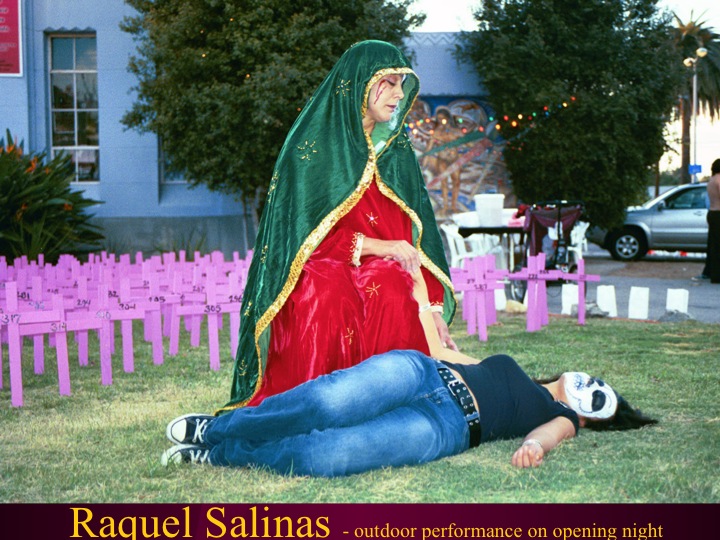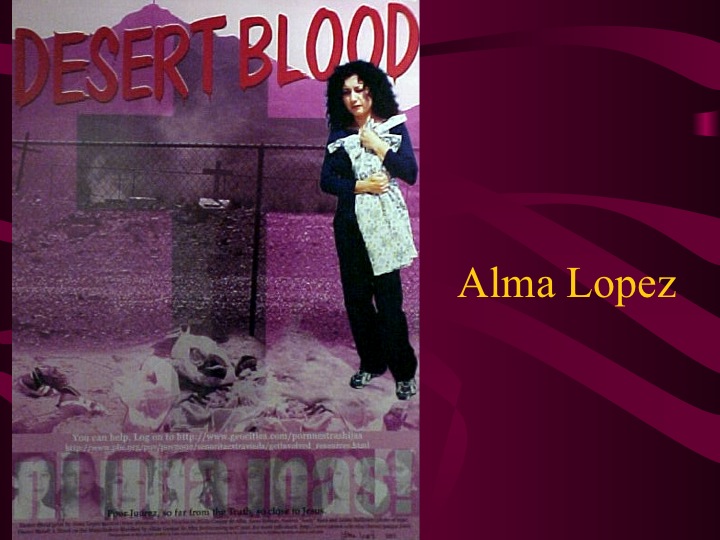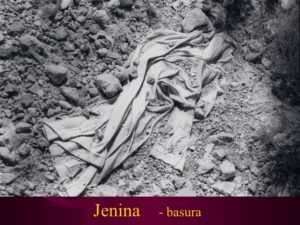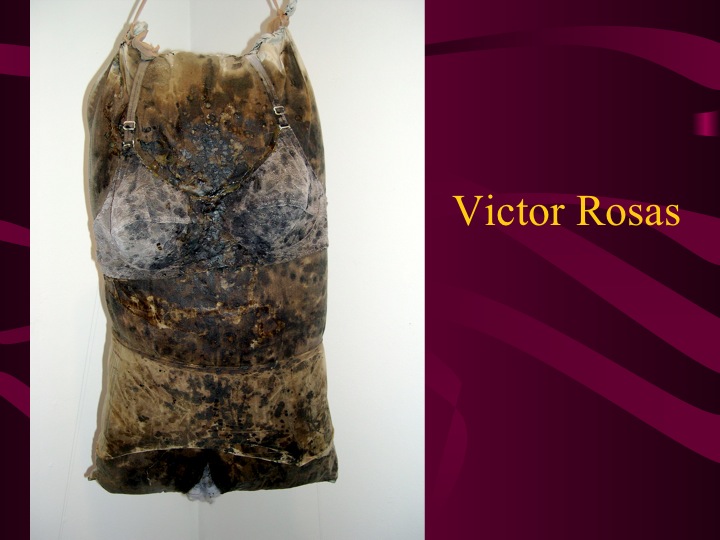
In 2001, Azul Luna founded Las ViejaesKandalosas, a collective of artists with a mission to denounce the murdering of women in Ciudad Juarez, Mexico through art. Her first exhibit called EsesKandalo in 2001, took place at Self Help Graphics & Art in East Los Angeles. In February of the following year photographer Azul along with filmmaker Lorena Mendez-Quiroga led a caravan from Los Angeles to Ciudad Juarez to an invitational protest exhibit and press conference that they had curated at the INBA (Instituto Nacional de Bellas Artes) Museum. Passengers in one car were artists Raul Baltazar, Victoria Delgadillo, Erica Elizondo and Rigo Maldonado. El Paso Times award winning reporter and Co-producer of this event, Diana Washington Valdez was the key speaker at INBA. Victim mothers and wives of alleged perpetrators gave testimonies.
In 2002, as a resolve from the INBA protest and community dialogue, Rigo Maldonado and Victoria Delgadillo co-curated the first internationally acknowledged exhibit on these femicides at SPARC- the Social & Public Resource Center in Venice Beach. This exhibit was called Las Hijas de Juarez and included 45 major visual and performance artists from Los Angeles.
Read more about this curation in UCLA’s Aztlan Journal
At this time, details and images were not readily available due to a systematic local Mexican government cover-up. In addition to selecting artists for Las Hijas de Juarez, it was necessary for the curators to provide details, images and resources for each artist. Several trips to Ciudad Juarez and Rigo Maldonado’s arduous hours on American police websites began the thread of thousands of cases related to these murders. Due to a lack of information on these murders on the internet then, many of these victims were identified by Maldonado by death year, age, area and degree of brutality.
Before they began curating Las Hijas de Juarez, Rigo Maldonado and Victoria Delgadillo created a strategy as to how art could be used in a human rights crisis. Victoria believes in the power of words and therefore did not want the language for the Las Hijas de Juarez to compartmentalize what was occurring as solely a Mexican matter. What was happening in Ciudad Juarez was a case of human rights and justice. Rigo did not want to assume the role of investigator or theorist on these disappearances. He wanted to invoke others in all walks-of-life to participate in this action.
Las Hijas de Juarez Images (2002). In addition to the visual artists featured below, the following artists/musicians/writers also participated in Las Hijas de Juarez: Monica Barriga, Max Blumenthal, Cecilia Brennan, Nikki Campbell, Erika Elizondo, Angela Flores, Xochi Flores, Alicia Gaspar de Alba, Mike Ibarra, Shane Jordan, Angelica Loa, Frank Luis, Rocio Marron, Soraya Medina, Eddika Organista, Tianna Paschel, Minh Pham, Dominique Rodriquez, Aida Salazar, Raquel Salinas, Carolina Sarmiento, Carmen Vega and Brian Walsh.
























“Art which memorializes and honors the dead women through a Day of the Dead celebration cannot simultaneously symbolise the brutality of these murders. Similarly, works which focus on bodily trauma and murder cannot effectively memorialize these lives. By examining the curatorial measures that were taken to organise the works by Delgadillo and Maldonado, I argued that Hijas de Juarez created a space in which the limitations of representation are exceeded through collective juxtaposition. The open dialogue of the works evoke the Juarez situation, and yet also heals, in a way that single interpretations, including political ones, never could. This is a unique function of art as I see it. ” – Lance Richardson, Writer/Journalist. In an interview with Victoria Delgadillo, Lance Richardson told her that his research on the activism for the disappeared women of Juarez through visual art, was the greatest amount of work world-wide created on one subject in the history of art.